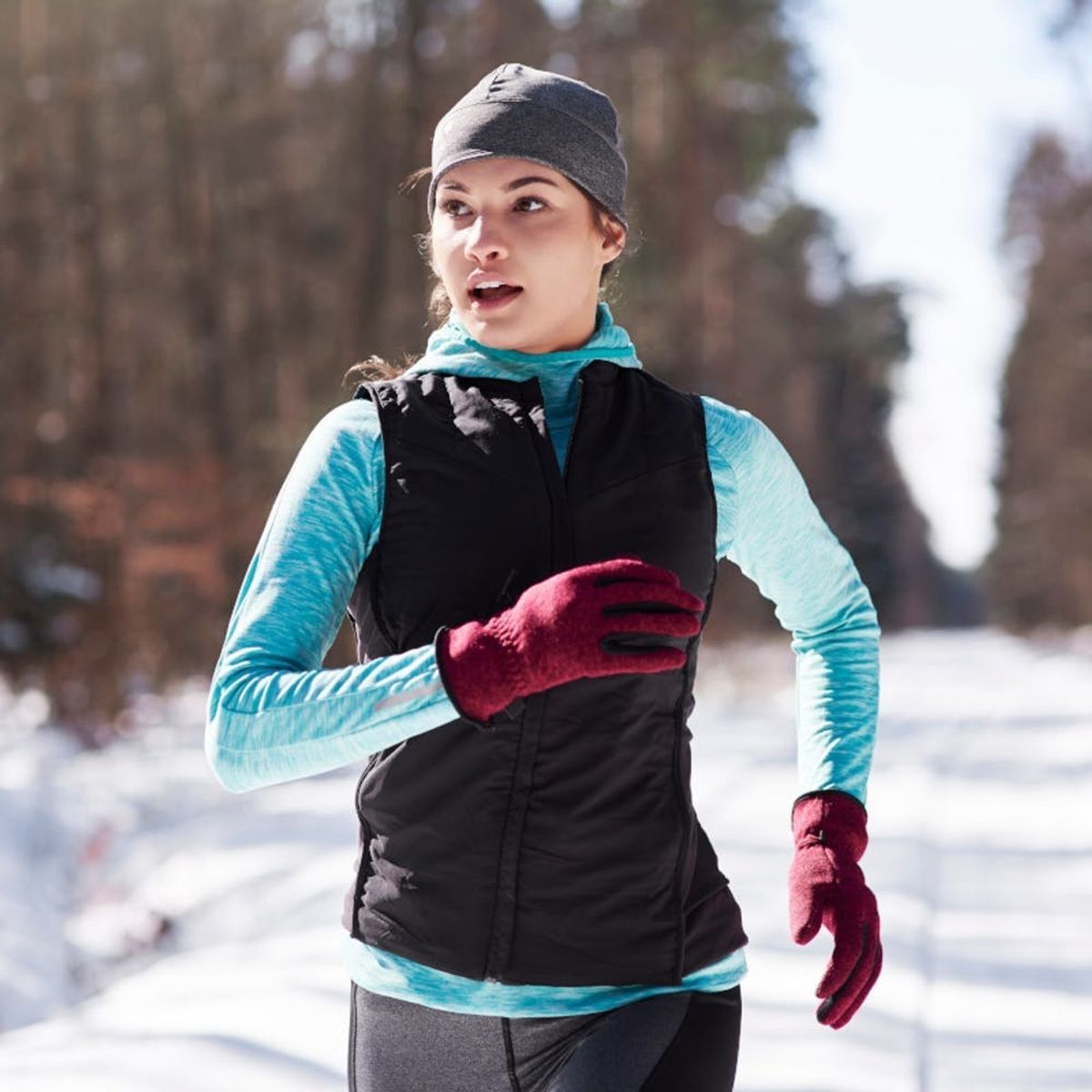Grab those wool socks and go, girl!
5 Tips to Warm Up Your Winter Workouts

Willing yourself to work out outdoors through the winter is hard enough as it is (seriously, go you). But unfortunately, the weather doesn’t just make convincing yourself to exercise harder; it makes the warm-up portion harder too. We focus a lot of our attention on how to stay healthy when getting our sweat on in the scorching heat, but those shiver-filled workout sessions in the dead of winter also need our attention. So for those of you who are set on running, swimming, or cycling no matter the temp, Matt Kite, a coach and director of education for D1 Training, has some tips about how to get and stay warm before and during your workout.

1. Raise your heart rate. In the middle of summer, we can often get away with some half-assed stationary stretches (though even then they’re not ideal). But once the temperatures drop, you need to make sure you’re doing dynamic movements during your warm-up. “The key here is making sure to mix in dynamic movements that not only stretch the muscles but also warm them up thermally by challenging and raising your heart rate,” Kite explains. He suggests beginning with “full-body movement prep,” such as plank walks, then progressing to high knees or burpees.
2. Take your time. It’s natural to want to get in and get out when it comes to winter workouts (or, rather, out and back in), but don’t shorten your warm-up routine simply because it’s “too cold,” Kite cautions. He says the assumption that you’ll warm up more quickly if you skip straight to cardio is an incorrect — and dangerous — one: “In fact, spend additional intentional time warming up the muscles and increasing blood flow.” Plan on a good 15 to 20 minutes.
3. Adjust your atmosphere. Because an extended warm-up can be challenging in inclement weather (hey, no one wants to stand in the cold longer than needed), Kite recommends changing where you do your warm-up altogether. There’s no reason not to bask in the warmth of your home, gym, etc. while you ready your body for the outdoor portion of your workout. Plus, this will accelerate the warm-up process. “You still may need to do a few warm-ups outdoors,” Kite says, “but you will be much better primed heading outside after an indoor workout.”

4. Dress the part. Gearing up for your mid-winter workout requires some strategizing. “Trap the heat intelligently,” Kite says. “If the weather is really brutally cold and even wet, keep those under-circulated areas like feet, hands, lower legs, and even arms covered with a breathable but warm clothing.” (Marino wool and fleece are great, BTW.) But it’s not just a see-who-can-layer-the-most-clothing contest. Materials that lose their heat-retaining properties after they trap moisture — such as spandex and even 100 percent cotton — will actually make you colder once sweat starts to soak into them.
5. Make it routine. Now that you know you can’t slack on this part of the exercise process, get into the habit of allotting the time for it. While it’s still bearable outside, Kite recommends developing a few well-rounded warm-up routines that you genuinely enjoy and can easily memorize. Once you have those down and it starts to get chillier, seamlessly schedule in the additional time it takes to warm up in the cold. “If your group run or workout is at 6am every day, set your schedule and alarm 15 to 20 minutes earlier than usual,” Kite suggests. And don’t worry — it’ll only be a few more months until it’s warm again!
Let us know how you’re staying active as the weather cools @BritandCo.
(Photos via Getty)



















